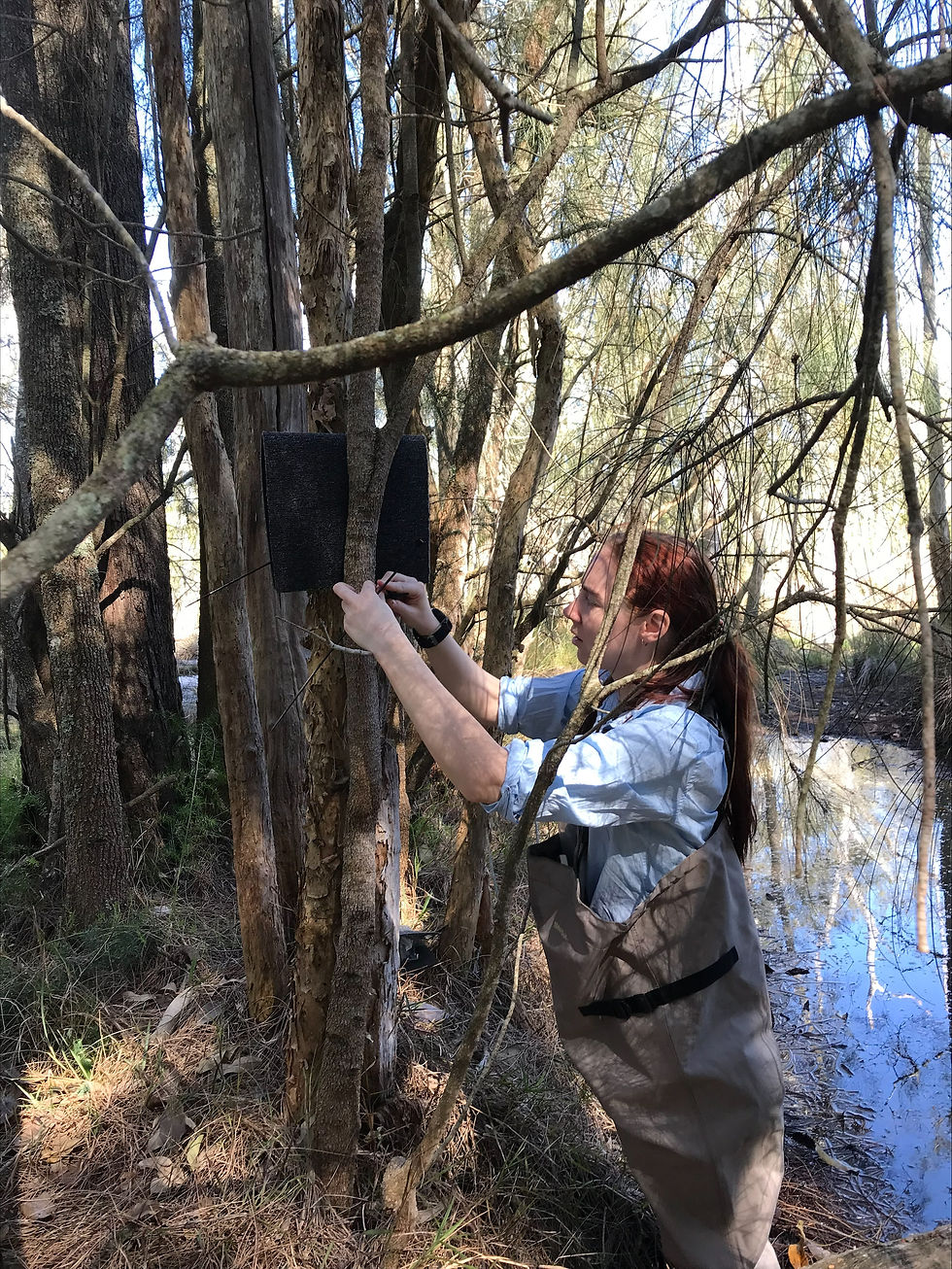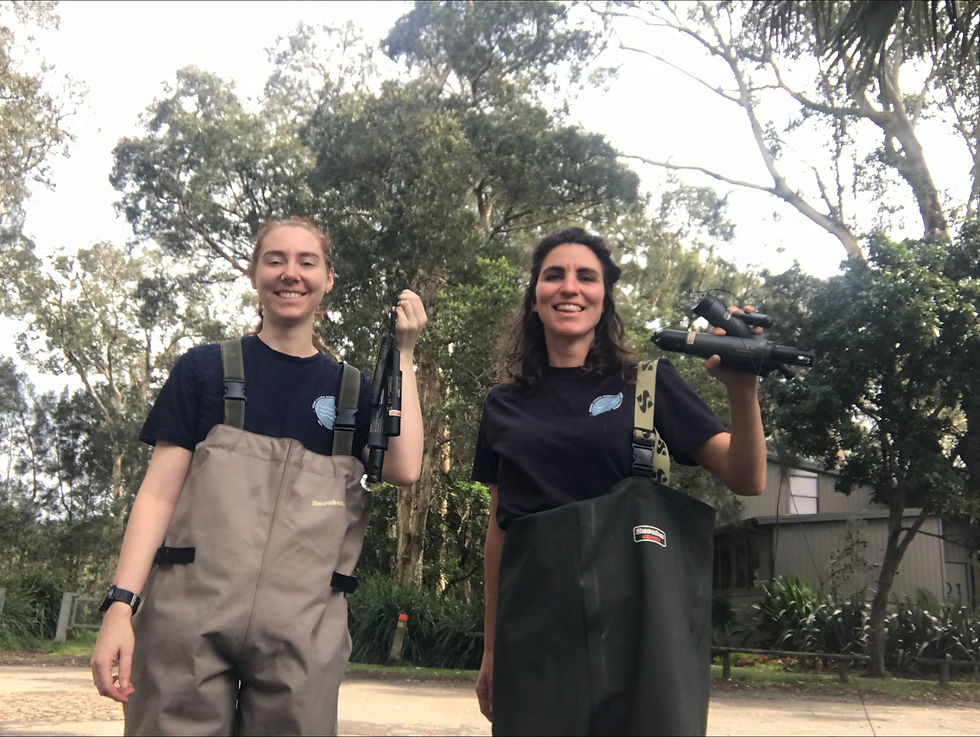A jump-start into fieldwork
- Kate Tunstill
- Nov 6, 2023
- 1 min read
Last month Kate Tunstill and Maddy Broadfoot completed fieldwork at a few picturesque wetland locations along the NSW coast. Kate, a first year PhD student, and Maddy, in her second year of her PhD, both conduct research with CERG at the University of Newcastle.
Kate's project aims to look at the interaction between estuarine wetlands and the endangered green and golden bell frog (Litoria aurea) along the NSW coast. To understand how salinity and water level change in these wetlands, Kate has started to install stilling wells containing water level meters at her sites. While out in the field, audio devices were placed to detect any frog calling activity during the breeding season, running from September to March each year.
Once a month over the breeding season Kate will be conducting nocturnal surveys to measure, microchip and swab (for Chytrid Fungus) the green and golden bell frog at local sites around Newcastle and the Central Coast.

Female Litoria aurea during a nocturnal survey.

Kate installing an audio device to listen in on any frog calls.

Maddy surveying in a newly installed stilling well.

A successful day out in the field!






Comments